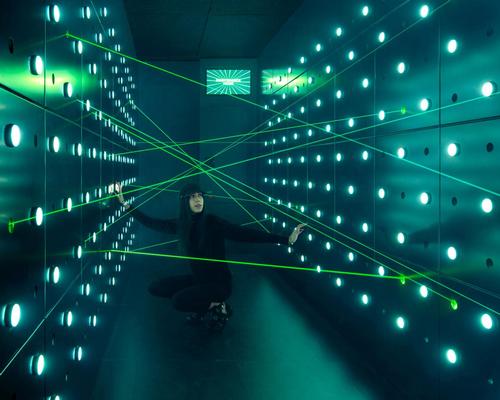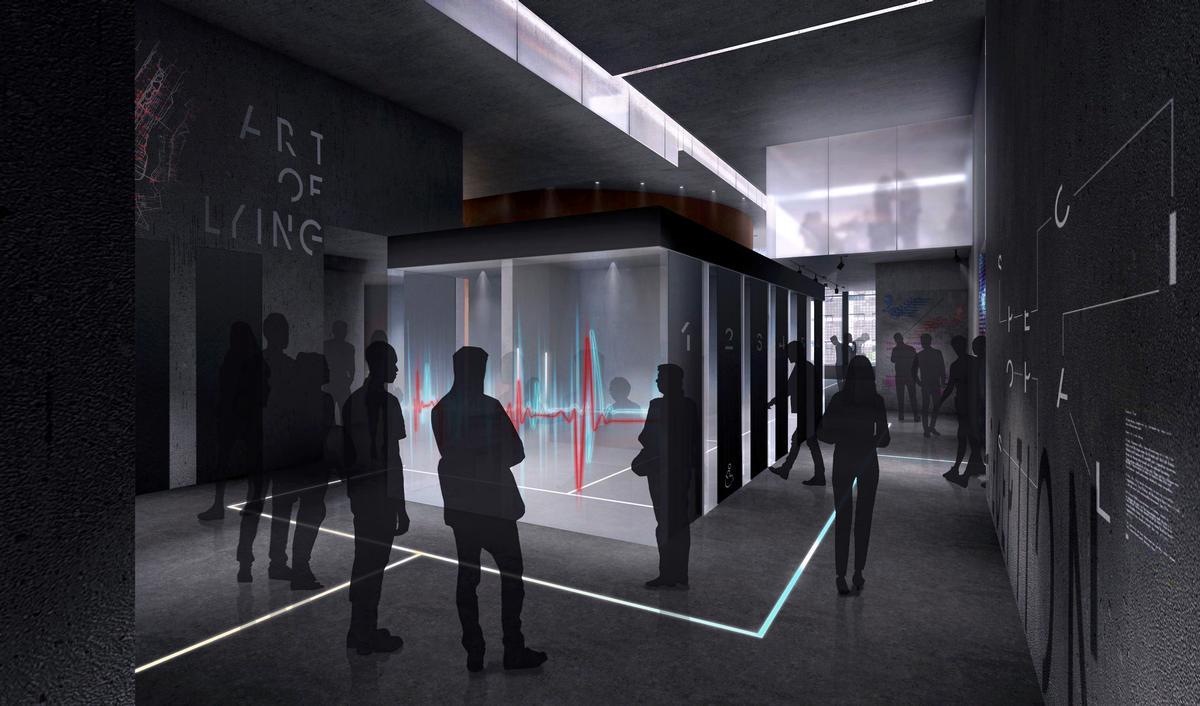15 Feb 2018
Cloak and dagger in New York as David Adjaye's spy museum prepares for public launch
BY Kim Megson

An interactive museum dedicated to the art of spycraft, designed by the studio of David Adjaye, opens in New York tomorrow (16 February) – “empowering visitors to seek the truth, form their own opinions and question everything.”
Guests will enter the enigmatic world of code-breakers, spycatchers, hackers and undercover agents at SPYSCAPE, which has been developed in collaboration with investigative journalists, former directors of intelligence agencies and station chiefs.
Conceived as an “iconic destination that draws visitors into the secretive universe of espionage through a collection of world-class artefacts, dynamic storytelling and customised experience”, the three-level museum is located in a 60,000sq ft (5,500sq m) building in Midtown Manhattan, two blocks west of the Museum of Modern Art.
Visitors are guided into a 350sq ft (32sq m) multimedia briefing elevator – one of the largest in the world – that orients them to the experience before transporting them to the first exhibition level. Galleries are housed across seven bespoke pavilions – themed around encryption, deception, surveillance, hacking, cyber-warfare, special ops and intelligence.
SPYSCAPE
The Experience

Upon entry, visitors receive a unique identity band, which uses RFID technology to personalise their experience. They then enter the Briefing, a high-tech theatre which rises up through the building as it introduces the world of secret intelligence via an immersive film developed with the studio that creates VFX for films such as Avengers, Ex-Machina and Blade Runner 2049.
Their spy profiles are later analysed in Debrief, where they discover which of the 10 archetypal Spy Roles they are best suited to. This authentic profiling system was developed with a former Head of Training at British Intelligence and top industrial psychologists. The spy roles are: agent handler, cryptologist, hacker, intelligence analyst, intelligence operative, special ops officer, spycatcher, spymaster, surveillance officer and technical ops officer.
Key Experiential Elements:
• Encryption Challenge: Visitors will use ciphers to send and receive coded messages to and from agents behind enemy lines. These messages, and how quickly and accurately they’re sent, will determine the success of missions, which then play out as short animated stories based on real-life events.
• Deception Challenge: Visitors will learn to lie, and learn the art and science of spotting lies, in an interrogation room. A pulse monitor and facial and audio recognition software track heartbeat, facial expressions, and vocal cues as they try their hand at lying.
• Surveillance Challenge: Surrounded by a 360-degree projection of live and pre-recorded CCTV imagery, visitors wear special headsets fitted with microphones and use voice-recognition software as a surveillance officer takes them through authentic surveillance missions to test their powers of observation.
• Special Ops Challenge: Visitors will make split-second decisions, reach for illuminated targets, and negotiate a path through laser beams to reach the end of the tunnels while scoring against the clock. This challenge tests agility, strategy and reaction times in this thrilling twist on a laser maze.
Source: SPYSCAPE
As well as exhibitions on subjects like the agent who brought down the FBI’s most damaging traitor, and the teenager who hacked the CIA’s website, SPYSCAPE also features interactive experiential ‘Spy Challenges’, in which visitors can test their own spy skills, including lie detection in interrogation booths, observation in a 360-degree live surveillance mission, and agility in special ops laser tunnels. Question Stations test their spy attributes, such as risk-tolerance, brainpower, and personality.
To evoke the world of espionage through the design, architectural flourishes are inspired by the world’s largest spy organisations, and include the use of smoked glass, bespoke fibre cement, dark grey acoustic panelling, black linoleum, mirror polished steel and a dramatic vaulted LED light canopy.
According to Adjaye Associates’ design narrative, “spaces will continually shift the visitor's vantage point and prioritise the experiences of discovery and observation, using lighting, screens and transparencies between floors and partially obscured interstitial circulation spaces that open up into immersive, fully interactive multimedia environments.”
Audio design was done by composer and sound designer Nick Ryan and lighting design was helmed by Lighting Workshop.
The museum will also house a café, private event spaces, a ‘spy shop’ and a bookshop with over 1,000 rare and first edition espionage-related titles.
The attraction has been masterminded by private investment group Archimedia, which has previously invested in Aman Resorts, along with spy-themed television and film projects, such as acclaimed adaptations of John Le Carré’s The Night Manager and A Most Wanted Man.
Close Window